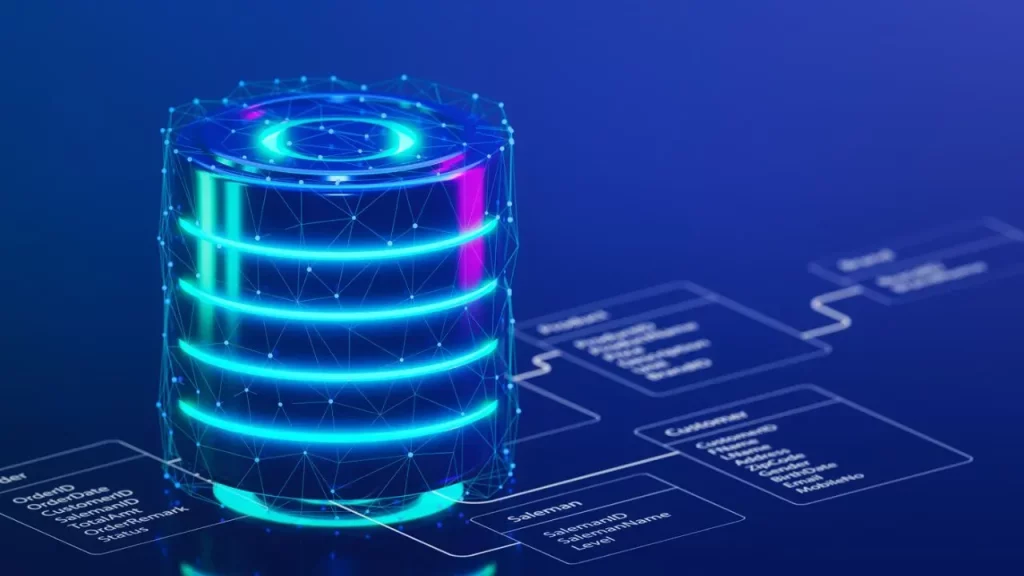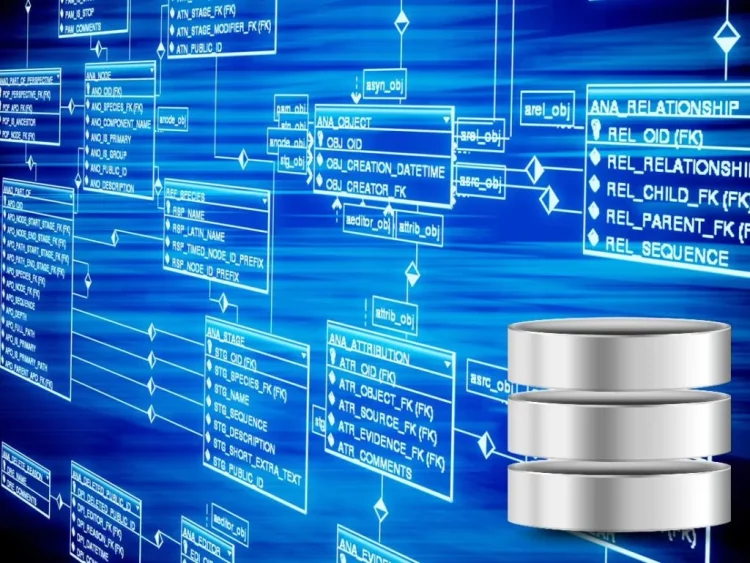With the rapid rise of blockchain technology, many people are starting to explore how it differs from traditional databases. While both are used for storing and managing data, the structure, functionality, and use cases of blockchain and traditional databases are quite different. In this article, we will delve into the key differences between blockchain and traditional databases, and explain why blockchain is becoming an increasingly popular solution in certain sectors.
1. Data Storage Structure
Blockchain:
Blockchain operates as a decentralized, distributed ledger. Data is stored in “blocks,” each containing a list of transactions or data entries. Once a block is filled with data, it is cryptographically linked to the previous block, forming a “chain.” This chain of blocks is immutable, meaning that once a block has been added to the chain, it cannot be altered or deleted. Every participant in the blockchain network maintains a copy of the entire blockchain, ensuring redundancy and security.
Traditional Databases:
Traditional databases, on the other hand, typically use a centralized structure where data is stored in tables within a central server. This centralized model allows for easy modifications, deletions, and updates to the data, but it also introduces the risk of a single point of failure. Unlike blockchain, traditional databases are often controlled by a central authority (such as a database administrator) who has the ability to alter the data at any time.
2. Centralization vs. Decentralization
Blockchain:
One of the key features of blockchain is its decentralization. No single entity controls the network; instead, it is maintained by multiple independent nodes (participants) distributed across the network. Each participant has a copy of the entire blockchain and is responsible for validating transactions through consensus mechanisms, such as Proof of Work (PoW) or Proof of Stake (PoS). This decentralized nature of blockchain enhances security, transparency, and resistance to censorship.
Traditional Databases:
In contrast, traditional databases are typically centralized. A central server or authority manages the database, and all data is stored and accessed from this central location. This centralization makes it easier to manage and update data, but it also introduces risks such as data breaches, server failures, and corruption. The central authority has the power to modify or delete data at will, which can sometimes compromise trust and transparency.
3. Data Integrity and Immutability
Blockchain:
One of the most important features of blockchain is its immutability. Once data is added to the blockchain, it is nearly impossible to alter or erase it. Each block contains a cryptographic hash of the previous block, making it nearly impossible for any malicious actor to alter the data without being detected by the network. This feature ensures the integrity of the data, making blockchain an ideal solution for use cases where transparency, trust, and accountability are essential, such as in financial transactions or supply chain management.
Traditional Databases:
Traditional databases allow for easier modification of data. Changes to records can be made by authorized users, and there is often no inherent mechanism to ensure that the changes are transparent or traceable. While some traditional databases implement auditing features to track changes, they do not offer the same level of immutability and integrity as blockchain does. This makes traditional databases more vulnerable to manipulation or errors, especially if the central authority is compromised.
4. Consensus Mechanisms vs. Centralized Control
Blockchain:
In blockchain, consensus mechanisms are used to validate and verify transactions. These mechanisms ensure that all participants in the network agree on the state of the blockchain. For example, in Bitcoin’s blockchain, Proof of Work (PoW) is used, where miners must solve complex mathematical puzzles to add a new block to the blockchain. Other consensus mechanisms, like Proof of Stake (PoS) or Delegated Proof of Stake (DPoS), offer alternative ways to achieve consensus. The decentralized nature of consensus mechanisms ensures that no single entity has full control over the blockchain network.
Traditional Databases:
In traditional databases, the management of the database and validation of data is controlled by a centralized authority. This authority can be an individual or an organization that manages all aspects of the database, including who has access to the data, who can modify it, and how data is validated. Unlike blockchain, there is no need for a consensus mechanism in traditional databases because the central authority has full control over data operations.
5. Speed and Efficiency
Blockchain:
While blockchain offers significant security and transparency advantages, it can sometimes be slower and less efficient compared to traditional databases. The process of validating transactions through consensus mechanisms can be time-consuming and resource-intensive. For instance, in Proof of Work-based blockchains like Bitcoin, miners must solve complex cryptographic puzzles before adding a new block to the blockchain, which can take time and require significant computational resources. As a result, blockchain transactions are often slower and have higher transaction fees compared to centralized databases.
Traditional Databases:
Traditional databases are typically much faster and more efficient when it comes to handling large volumes of transactions or data requests. Since there is no need for consensus mechanisms or cryptographic validation, data can be processed, updated, and queried almost instantly. This makes traditional databases well-suited for applications that require high-speed data retrieval, such as online banking systems, e-commerce platforms, or enterprise resource planning (ERP) systems.
6. Use Cases
Blockchain:
Blockchain is ideal for scenarios where transparency, security, and trust are critical. Common use cases include:
- Cryptocurrencies: Bitcoin, Ethereum, and other cryptocurrencies are built on blockchain technology, enabling peer-to-peer transactions without the need for a central authority.
- Supply Chain Management: Blockchain allows businesses to track goods as they move through the supply chain, providing transparency and ensuring authenticity.
- Smart Contracts: Blockchain enables self-executing contracts with predefined conditions, automating business processes and reducing the need for intermediaries.
- Voting Systems: Blockchain offers a secure and transparent way to conduct electronic voting, ensuring that votes cannot be tampered with.
Traditional Databases:
Traditional databases are more suitable for use cases where centralized control, speed, and efficiency are more important than decentralization or immutability. Some common use cases include:
- Banking Systems: Traditional databases are used to manage financial transactions in centralized systems like banks or payment processors.
- Customer Relationship Management (CRM): Businesses use databases to store and manage customer data, allowing for efficient communication and support.
- Enterprise Resource Planning (ERP): Traditional databases help manage inventory, employees, and other internal operations of an organization.
- Healthcare Systems: Patient records, appointment schedules, and billing systems are often managed in centralized databases for speed and efficiency.

7. Cost and Maintenance
Blockchain:
Blockchain networks, particularly those using energy-intensive consensus mechanisms like Proof of Work, can be costly to maintain. The need for computational resources to validate transactions and the decentralized nature of the network mean that blockchain systems require substantial energy consumption and ongoing maintenance. Additionally, as the blockchain grows, the storage requirements also increase, potentially leading to higher costs for storing and maintaining the entire ledger.
Traditional Databases:
Traditional databases are typically more cost-effective in terms of maintenance and energy consumption. Centralized servers can be optimized to handle large amounts of data efficiently, and updates can be made without requiring consensus or validation from multiple nodes. However, the cost of centralized databases can increase with the complexity of the system and the need for dedicated IT personnel to maintain and secure the database.
Conclusion
While both blockchain and traditional databases serve the fundamental purpose of storing and managing data, they differ significantly in their structure, control mechanisms, security features, and ideal use cases. Blockchain offers unmatched decentralization, immutability, and transparency, making it ideal for use cases where trust and security are paramount. However, it may come with higher costs and slower transaction speeds compared to traditional databases, which excel in environments that prioritize efficiency and centralized control.
Ultimately, the choice between blockchain and a traditional database depends on the specific needs of the application and the trade-offs between security, speed, and control. As blockchain technology continues to evolve, it may find its place alongside traditional databases, with each playing a crucial role in different sectors and use cases.
















































